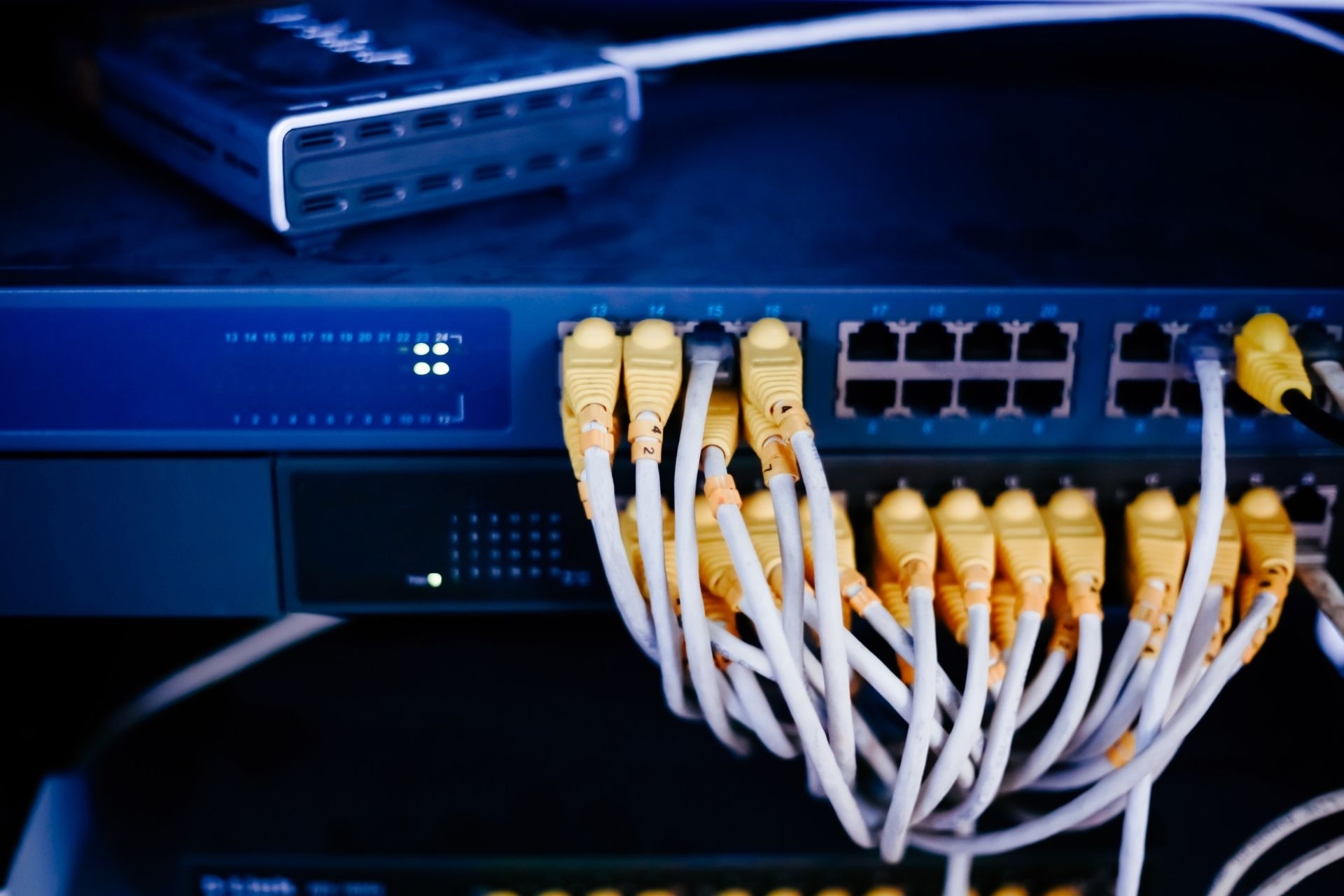

Peering at Internet Exchange Points (IXPs) offers network operators numerous benefits, including improved network performance, reduced latency, increased redundancy, and lower costs. By directly connecting with other networks at an IXP, operators can exchange traffic more efficiently, leading to faster data transmission and enhanced user experience. Additionally, peering allows for more direct routing paths, reducing the reliance on third-party networks and improving overall network stability.
Internet Exchange Points (IXPs) play a crucial role in reducing latency for internet traffic by providing a direct interconnection point for networks to exchange data. By peering at an IXP, network operators can establish direct connections with other networks, bypassing the need to route traffic through multiple intermediaries. This direct exchange of traffic leads to shorter transmission paths, lower latency, and faster data transfer speeds, ultimately improving the overall performance of the internet.
After another busy week last week, the team at Baltic Broadband got the White Stuff & their shiny new shop connected with high speed fibre internet at Liverpool One. Gigabit...

Posted by on 2024-03-05
LCRDC, Baltic Broadband’s new Data Centre brand – has today launched a new Micro data centre, located in the East of Liverpool, based in Edge Hill. Strategically located within the...
Posted by on 2024-03-01
Worried about a possible Fibre Cut? You should be. Though fibre is perceived as a “perfect” media, fibre is fragile and repairs take days or weeks requiring specialist skills and...
Posted by on 2024-02-27
LCRDC, Baltic Broadband’s new Data Centre brand – have today launched a new Micro Data centre located in Bootle, Sefton. Strategically located within South Sefton, this Micro Data Centre is...
Posted by on 2024-02-13
Route servers at Internet Exchange Points (IXPs) act as facilitators for peering by simplifying the process of exchanging routing information between participating networks. These servers help automate the exchange of routing tables, making it easier for networks to establish peering relationships and efficiently exchange traffic. By centralizing the routing process, route servers streamline the peering process at IXPs, enabling network operators to quickly and easily connect with multiple peers.

Internet Exchange Points (IXPs) contribute to improving network resilience and redundancy by providing a centralized hub for network interconnections. By peering at an IXP, network operators can establish direct connections with multiple peers, creating diverse routing paths and reducing the risk of network outages. In the event of a network failure or congestion, IXPs offer alternative routes for traffic to flow, enhancing network resilience and ensuring continuous connectivity.
Different types of peering arrangements available at Internet Exchange Points (IXPs) include settlement-free peering, paid peering, and private peering. Settlement-free peering allows networks to exchange traffic without any financial compensation, based on the principle of mutual benefit. Paid peering involves one network paying another for the exchange of traffic, typically based on traffic volume. Private peering involves a direct, private connection between two networks, bypassing the public peering fabric of the IXP.

Internet Exchange Points (IXPs) help reduce the cost of internet traffic for network operators by enabling them to exchange traffic directly with other networks at a lower cost than using transit providers. By peering at an IXP, operators can avoid costly transit fees and reduce the amount of traffic that needs to be routed through third-party networks. This direct exchange of traffic at IXPs leads to cost savings for network operators and helps lower the overall cost of internet traffic.
Security measures typically implemented at Internet Exchange Points (IXPs) to protect against DDoS attacks and other threats include filtering, monitoring, and incident response mechanisms. IXPs often deploy traffic filtering tools to block malicious traffic and prevent DDoS attacks from impacting network operations. Additionally, continuous monitoring of network traffic helps detect and mitigate security threats in real-time, while incident response teams are ready to address any security incidents promptly. By implementing these security measures, IXPs ensure the reliability and security of the networks interconnected at their facilities.

The implications of net neutrality for bulk internet users are significant, as it ensures that all data on the internet is treated equally by Internet Service Providers (ISPs) without discrimination or preferential treatment. This means that bulk internet users, who consume large amounts of data on a regular basis, can access and use online services, applications, and content without any restrictions or limitations imposed by ISPs. Without net neutrality, bulk internet users may face challenges such as slower connection speeds, limited access to certain websites or services, and potential additional fees for accessing certain types of content. Therefore, maintaining net neutrality is crucial for ensuring that bulk internet users can continue to enjoy a free and open internet experience.
The implications of AI and machine learning for bulk internet optimization are vast and transformative. By leveraging advanced algorithms and data analysis, businesses can automate the process of optimizing their online presence on a large scale. This includes tasks such as keyword research, content creation, link building, and website performance monitoring. AI can analyze vast amounts of data to identify trends and patterns, allowing for more targeted and effective optimization strategies. Machine learning algorithms can also continuously learn and adapt to changes in the online landscape, ensuring that websites are always up-to-date and competitive. Overall, the use of AI and machine learning in bulk internet optimization can lead to increased visibility, traffic, and ultimately, conversions for businesses operating in the digital space.
Bulk internet pricing models are evolving to meet the demands of businesses seeking cost-effective solutions for their connectivity needs. One trend in bulk internet pricing models is the shift towards usage-based pricing, where companies pay for the amount of data they consume rather than a flat rate. Another trend is the bundling of services, such as internet, phone, and cable, into one package to provide a comprehensive solution for businesses. Additionally, there is a growing emphasis on flexibility in pricing models, allowing businesses to scale their internet services up or down based on their changing needs. Overall, the trends in bulk internet pricing models reflect a desire for more customized and adaptable solutions in an increasingly digital world.
Bulk internet providers optimize for data transfer speed over long distances by utilizing advanced routing protocols, such as BGP (Border Gateway Protocol), to efficiently direct traffic through the fastest and most reliable paths. They also invest in high-capacity fiber optic cables and network infrastructure to minimize latency and packet loss. Additionally, they implement technologies like TCP acceleration, WAN optimization, and content delivery networks (CDNs) to enhance data transmission efficiency. By strategically placing data centers and caching servers in key locations, they can reduce the distance data needs to travel, further improving speed and performance. Overall, these providers employ a combination of hardware, software, and network optimization techniques to ensure fast and reliable data transfer across vast geographical distances.
Bulk internet providers implement redundancy for data backup by utilizing a combination of techniques such as data replication, mirroring, clustering, and RAID configurations. These providers often employ multiple data centers located in geographically diverse locations to ensure data is backed up in real-time and can be quickly restored in the event of a failure. Additionally, they may use advanced storage technologies like SANs (Storage Area Networks) and NAS (Network Attached Storage) to store redundant copies of data. By implementing a comprehensive redundancy strategy, bulk internet providers can minimize the risk of data loss and ensure high availability for their customers.
Bulk internet providers typically handle traffic prioritization for real-time applications by utilizing Quality of Service (QoS) mechanisms to ensure that critical data packets are given precedence over non-essential traffic. This involves implementing traffic shaping, packet prioritization, and bandwidth allocation techniques to guarantee a consistent and reliable connection for applications such as VoIP, video conferencing, and online gaming. By using deep packet inspection, traffic classification, and traffic management tools, bulk internet providers can identify and prioritize time-sensitive data packets based on their specific requirements, ensuring a smooth and uninterrupted user experience for real-time applications. Additionally, these providers may also employ traffic engineering strategies to optimize network performance and minimize latency for critical applications, ultimately enhancing the overall quality of service for their customers.